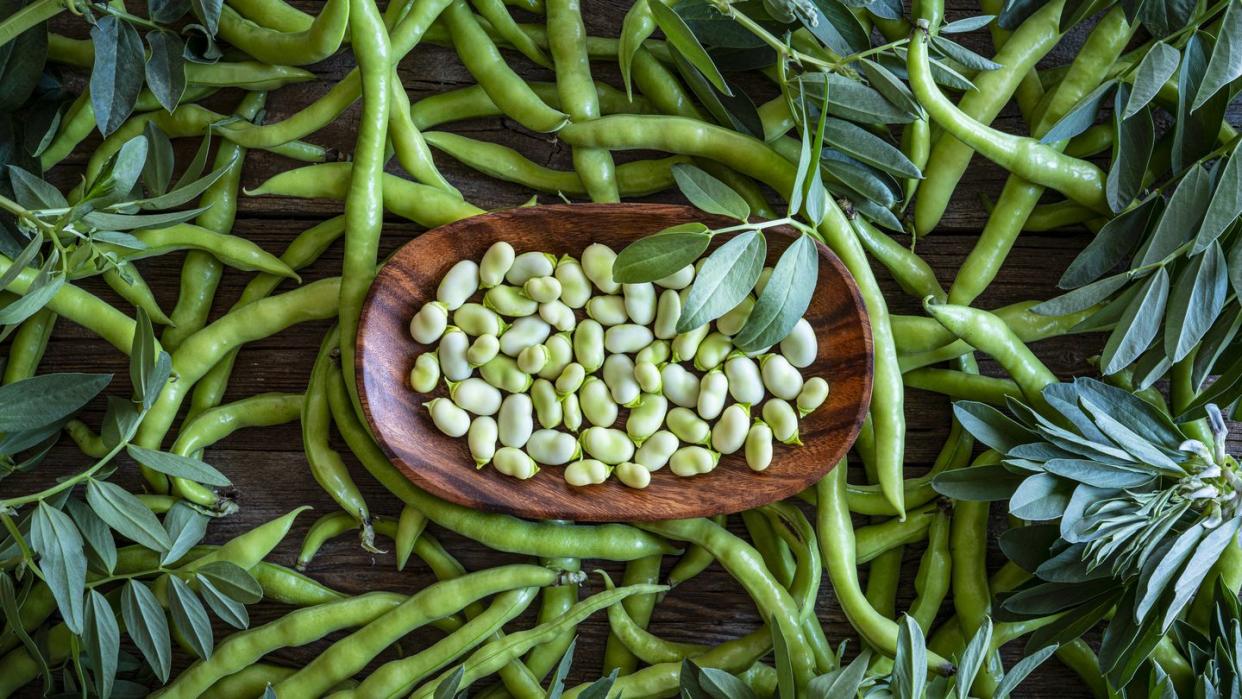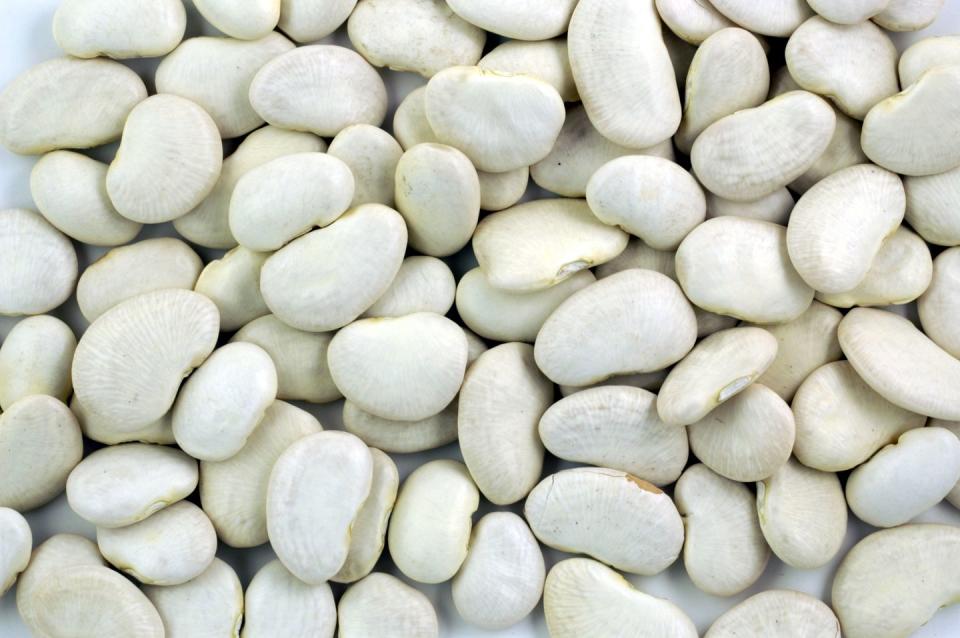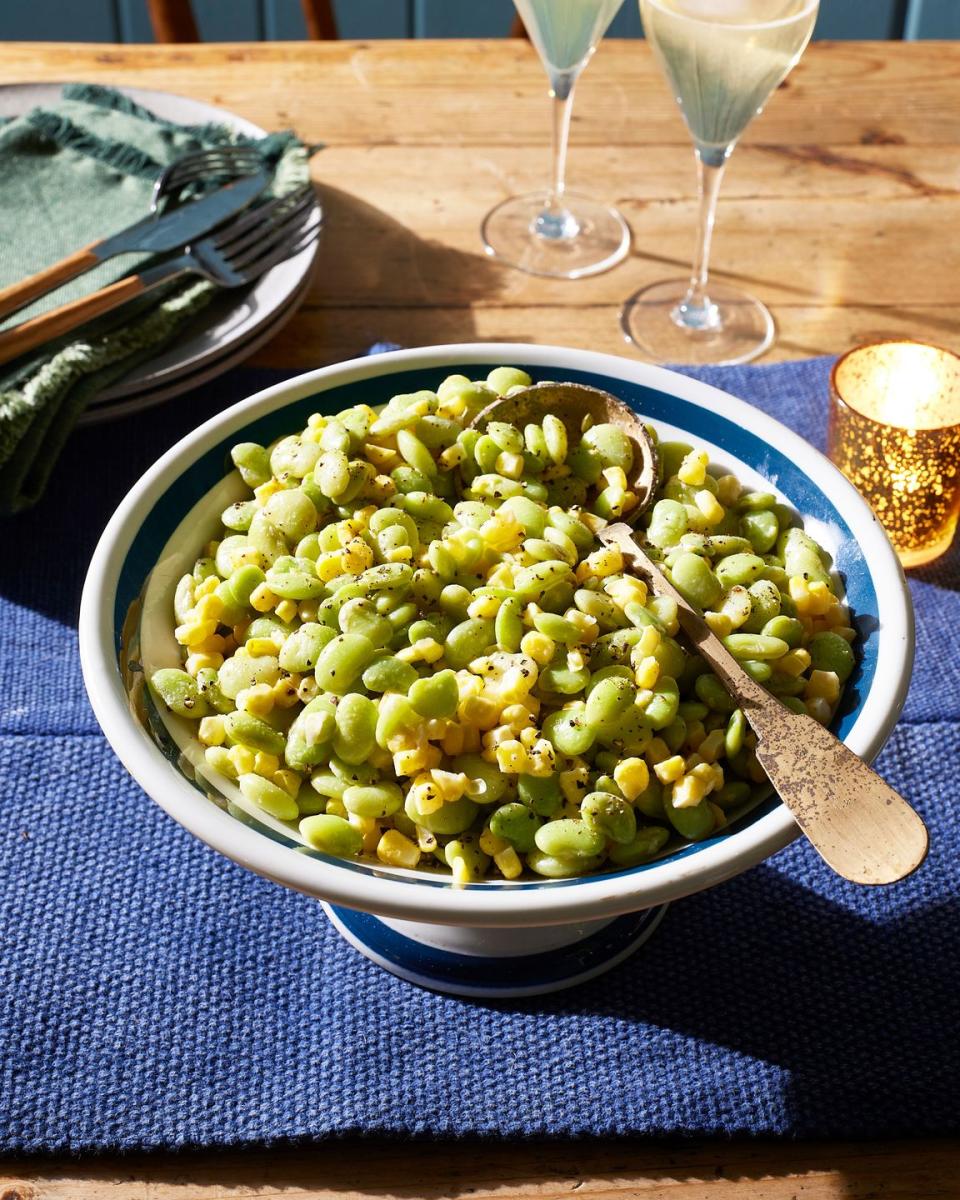How Exactly Are Butter Beans Different from Lima Beans?

"Hearst Magazines and Yahoo may earn commission or revenue on some items through these links."
Perhaps you grew up hating lima beans. The green, flat, often overcooked vegetable side dish was roundly decried by many kids right alongside Brussels sprouts, peas, radishes, and other vegetables. As an adult, perhaps you still avoid them!
If you weren't turned away from beans of all types (which, since chili is so delicious, it's hard to do), you may have, as an adult, picked up a can or two of butter beans to cook with.
Who can resist, with a name like that? And true to their moniker, butter beans can be wondrous. Their mild, creamy flavor makes a great addition to soups and salads, adding protein and fiber. They're even good on their own, cooked and served with—what else—melted butter on top!
If you're particularly eagle-eyed, you may have even noticed that butter beans and lima beans bear a striking similarity. Color and size aside, their flattened shape is unlike other rounder beans such as Great Northern, kidney, or black beans. So what's the deal?
Are Butter Beans and Lima Beans the Same Thing?
Yes, in fact, they are both part of the same species. So why the different names?
There are beans that are native to different areas all around the world. Chickpeas, for instance, are native to the Middle East, and soybeans are native to East Asia. But the particular bean that we call both Lima beans or butter beans—classified as Phaseolus lunatus by botanists—originated in Central and South America, but were specifically first grown in Peru.
As the beans grew in popularity—and made their way around the world—they were first named after their point of origin as beans from Lima, the capital of Peru: Lima beans.
(As a kid, I distinctly remember mishearing the name and getting quite excited that I was about to try some lime-flavored beans. I was very disappointed.)
In North Carolina, Lima beans picked up the nickname "butter bean" for their softer, more buttery texture compared to other beans. And the name stuck. It stuck particularly well for the larger, yellow or white varieties of beans that were being grown. (Possibly because those large, flat beans can almost resemble a pat of butter.)
Either way, butter bean, it turns out, is a much better name, and it took off. You can now find butter beans for sale, both dry and in cans, across North America and even in Britain.
Those aren't the only two names for the bean, however. You'll also find them called Madagascar beans as well as butter peas. Smaller Lima beans are called sieva beans in some places, and larger ones are called gigante beans.

How Do Butter / Lima Beans Taste?
It's tempting to say that they taste buttery! And while they do, compared to other beans (they have more sugar and slightly less fiber than a similar amount of kidney beans, for instance) it would be inaccurate to say that they taste like butter. They taste like beans—mild, chewy depending on how long they've been cooked, and getting the bulk of their flavor from any seasonings or food pairings.
You can do a lot with beans. They are a versatile and delicious food, and a staple source of both fiber and protein. But beans labeled butter beans are no more or less tasty than beans labeled Lima beans. Both can be made to be delicious, and both can be ruined with poor cooking, not enough (or too much) seasoning, or by over- or under-cooking.
What is the Nutrition of Butter / Lima Beans?
Beans of any kind are phenomenally healthy, with one of the highest sources of fiber (something we should all be getting a lot more of). They're also well known as a high source of protein and complex carbohydrates (both good sources of energy). Lima beans in particular have a significant amount of folate, iron, magnesium, potassium, and thiamine.
In fact, you'd be hard pressed to find a healthier food than beans, in many cases. If you're considering adding more lima or butter beans to your diet, you should definitely do it!

How to Cook Butter / Lima Beans
When it comes to cooking lima beans or butter beans, you have three main options: canned, frozen, or dried. Unless you're growing them in your garden, fresh beans are nearly impossible to come by. Additionally, raw Lima beans are toxic, and need to be cooked before they can be eaten.
Canned lima beans are already cooked, and can be eaten straight from the can, or can be warmed up or used in any dishes. These are beans that you can rinse and then put directly into a salad, for instance. Because they have been cooked before being canned, they will often contain sodium. So if you are watching your salt intake, read the label and/or look for low-sodium varieties.
Frozen lima beans are also typically pre-cooked, and so can be added directly to soups or casseroles, or thawed and added to salads. They can also be cooked further.
Dried lima beans or butter beans are by far the least expensive as well as the easiest to store, but they do take some time to prep.
To cook dried lima beans: Rinse beans off and sort through them, discarding any stones. Then bring the batch to a boil in salted water, and boil for about 10 minutes. Reduce heat to a simmer, partially covered, and let simmer on the stove until tender, about 2 to 6 hours depending on the age and dryness of the beans. You can pre-soak them for anywhere from an hour to 24 hours. This will reduce the cooking time as well as allowing the beans to more slowly swell, so that fewer of them burst.
Beans can also be cooked for shorter times in an Instant Pot or pressure cooker.

You Might Also Like

